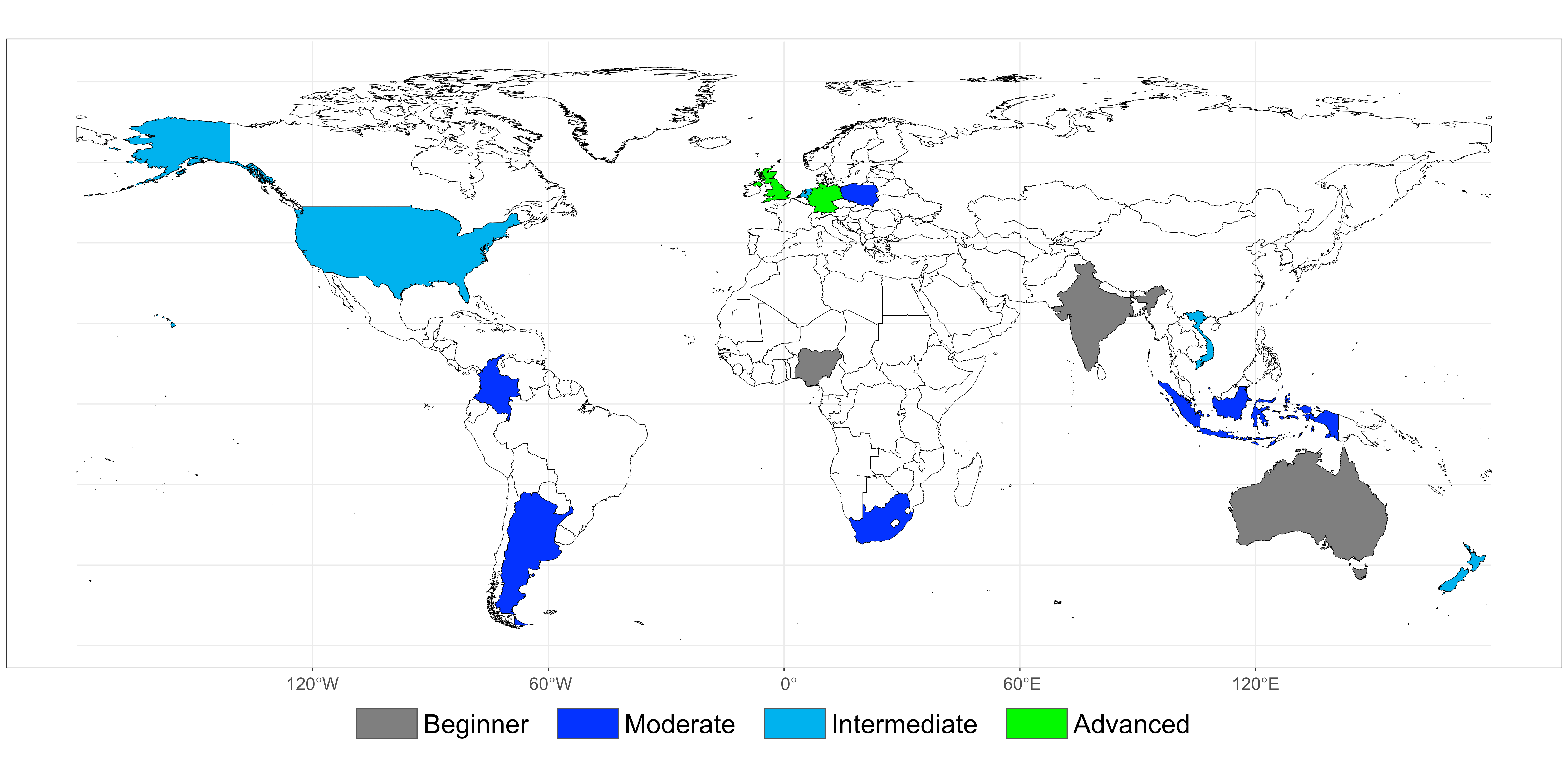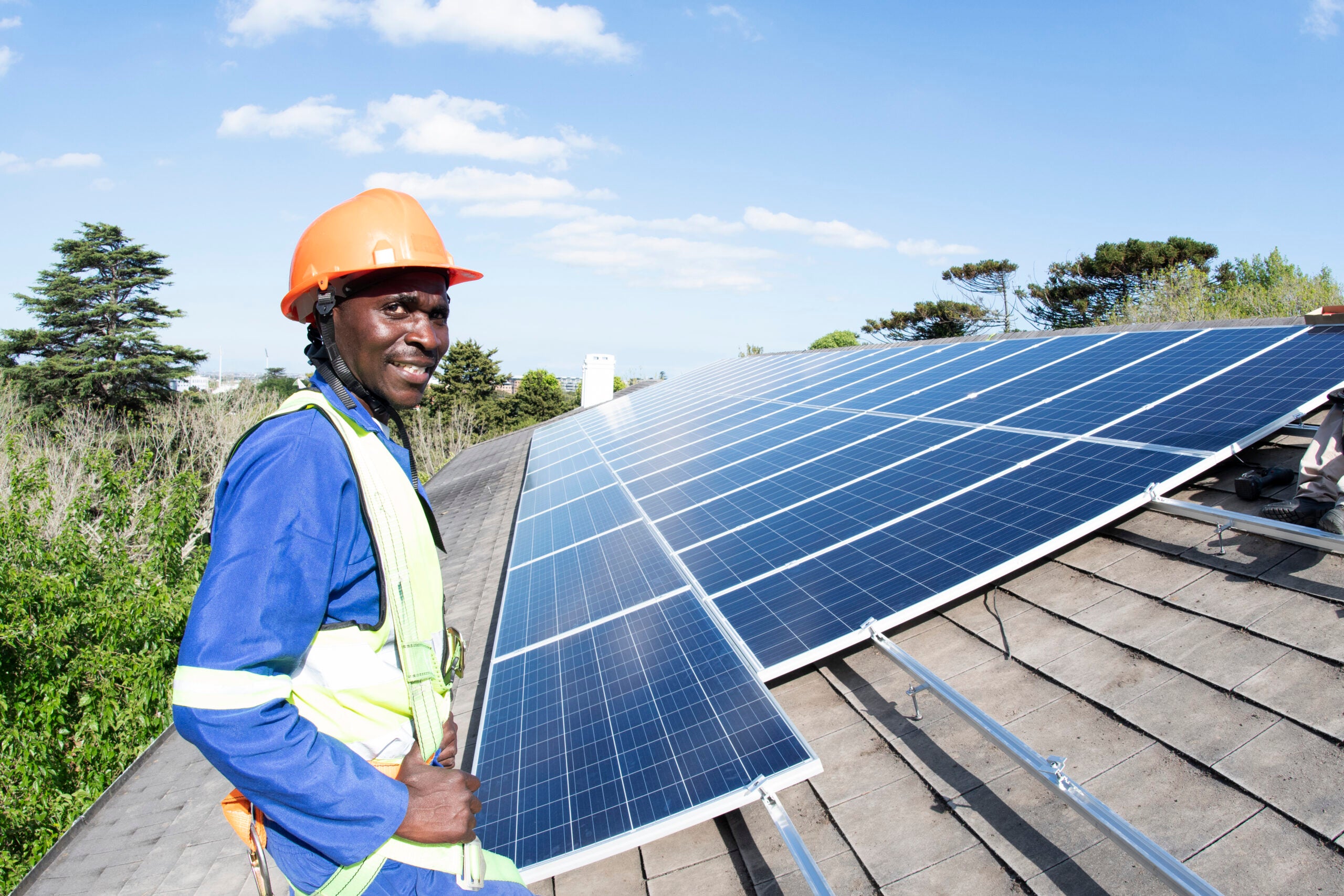Navigating a Just Labor Transition: Unveiling the JLT Progress Scale and Strategies for a Fairer Future
This blog was authored by Brigitte Castañeda and Minwoo Hyun, former EDF Doctoral Interns, Raphael Heffron, Professor at the Universite de Pau et des Pays de l’Adour, and by Environmental Defense Fund economist, Luis Fernández Intriago.
As temperatures rise globally, the energy sector stands clearly accountable, putting a critical spotlight on the need for a just energy transition. In particular, the ongoing strikes and labor disputes within the energy sector emphasize the urgent necessity of ensuring an equitable workforce transition. Our new Environmental Defense Fund Economics Discussion Paper: “A Global and Inclusive Just Labor Transition: Challenges and Opportunities in Developing and Developed Countries,” addresses this by evaluating labor policies in both developed and developing countries, introducing the Just Labor Transition Progress Scale to assess their energy transition efforts.
From the experience of the energy transition in developed countries, we find that a successful Just Transition for labor markers in energy sectors requires robust government leadership, financial support, inclusive local consultations, a well-structured taxation framework, evaluation of social security and labor regulations, and a focus on economic diversification to create alternative (and green) job opportunities. Developing countries transitioning from fossil fuels to cleaner energy face further and particular challenges due to having higher informal employment and less social protection. For example, coal-dependent countries are at higher risk due to characteristics that include labor-intensive and low-skilled jobs and geographic concentration, while oil-dependent countries face less disruption with more specialized roles. Overall, careful planning is crucial to maintaining affordability, accessibility, and inclusive employment, particularly in countries with concentrated fossil fuel jobs. Targeted strategies and economic diversification are two policy actions needed to ensure a Just Labor Transition (JLT).
This is why we propose a decision-making policy tool called the Just Labor Transition Progress Scale (JLTPS) to evaluate national progress toward a just labor transition. Our results highlight that most developing countries are at the beginner or moderate stage, while developed countries are at the intermediate stage, with very few at an advanced stage.
Lessons and Challenges in 7 Developed Countries and 7 Developing Countries
From the partial energy transition experiences in developed countries — given their continued reliance on fossil fuels— and the initial stages of developing countries, we draw several key lessons about the JLT. First, JLT policies are expected to be effective within a comprehensive framework characterized by a robust, explicit, and cohesive top-down leadership approach, coordinated efforts, and substantial central (federal) government funding. Second, the success of JLT initiatives also hinges on fostering extensive and inclusive local consultations, primarily through local networks capable of accessing top-down funding and coordination. Finally, realizing successful JLT efforts may require emphasizing “economic diversification,” aimed at revitalizing energy communities (through regional development plans) by fostering alternative labor market opportunities.
These lessons highlight the importance of strong and committed government support for diversifying the local economy, comprehensive ‘just’ policy frameworks that provide clear guidelines and funding, developing new renewable energy projects, and creating worker retraining and education programs.
Fig 1: Just Labor Transition Progress Across Countries
Source: Castaneda Rodriguez, Brigitte and Fernandez Intriago, Luis and Heffron, Raphael and Hyun, Minwoo, A Global and Inclusive Just Labor Transition: Challenges and Opportunities in Developing and Developed Countries. Environmental Defense Fund Economics Discussion Paper Series, EDF EDP 24-03, Aug 2024, Available at SSRN: https://ssrn.com/abstract=4927054
Next Steps of a Just Labor Transition
With UN COP29 just a few months away, many policy issues discussed in international, national, and local policy fora. However, labor remains a primary issue in any societal stakeholder’s policy action and priority list. For many people, labor is the essence of how they can achieve a sustainable and just livelihood. Our research identifies policy gaps and misalignment in many countries, indicating they are far from reaching their labor transition targets. However, applying the Just Transition Labor Transition Scale provides insights into what many countries have achieved and how far they still need to go to meet clear just labor goals.
This area requires further exploration; no country performs significantly better than others. For many countries, the priority should be the early adoption of policies that promote green jobs while aligning with the ‘just’ principles of the just transition. For populations worldwide, creating new jobs should bring opportunities for decent work and sustainable livelihoods.












